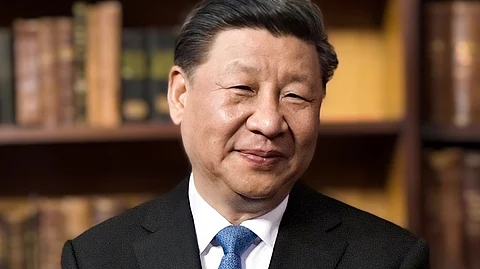

Chinese President Xi Jinping made a rare visit to Tibet to commemorate the 60th anniversary of the establishment of the Tibet Autonomous Region, highlighting Beijing’s focus on unity, stability, and development in the Himalayan territory.
Xi arrived in Lhasa, Tibet’s capital, on Wednesday, where state media reported that approximately 20,000 people, including officials and locals from various ethnic groups, greeted him with flowers and traditional dances.
According to Xinhua News Agency, Xi called for building a “modern socialist” Tibet that is united, prosperous, and environmentally sustainable.
He emphasized the importance of political and social stability, ethnic unity, and religious harmony to achieve these goals, as reported by state broadcaster CCTV.
Xi’s visit underscored Tibet’s strategic significance, particularly due to its border with India.
State media highlighted his encouragement of economic and cultural exchanges, alongside promoting a national common language.
Xi also stressed the need to adapt Tibetan Buddhism to socialist principles and strengthen regulation of religious affairs.
This aligns with Beijing’s policies, including mandatory Mandarin education in state-run schools for Tibetan children, aimed at fostering integration with the broader Chinese state.
The visit coincided with China’s ongoing construction of the Motuo Hydropower Station on the Yarlung Tsangpo River, set to become the world’s largest dam.
Beijing describes the project as a step toward carbon reduction and local prosperity, though it has raised concerns in India and Bangladesh about potential downstream water control.
Xi’s comments avoided mention of the Dalai Lama, the exiled Tibetan spiritual leader, amid ongoing tensions over his succession, with China asserting its authority to appoint his reincarnation.
The visit, prominently featured in state media, reflects Beijing’s narrative of progress and stability in Tibet since its annexation in 1951 and the establishment of the autonomous region in 1965.